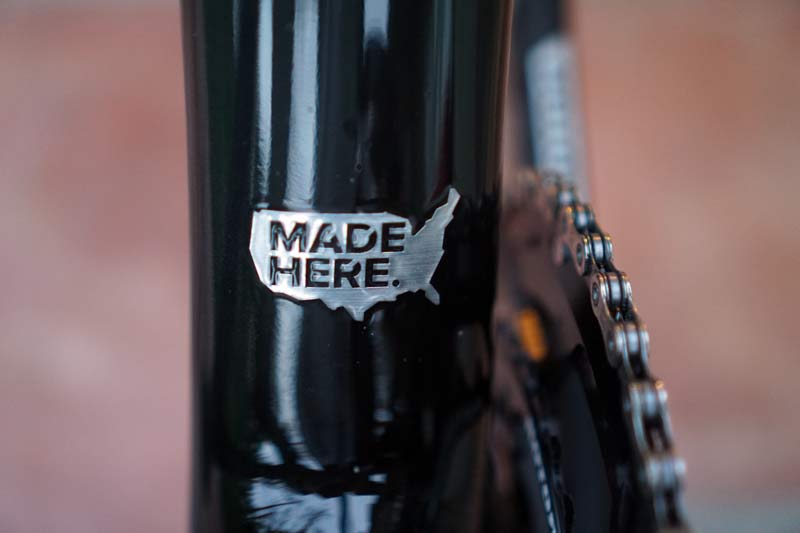While we’re busy lining up a proper tour for this fall, HIA Velo sent over this video as a taste of things to come. If you read our Guru factory tour parts one and two a couple years ago, some of it will look familiar. And we’re very, very excited to see what else they’ll be bringing to the table. It starts off a little slow, but gets going and mentioned something we found very interesting: When you can send your bike in for warranty or repair to the same people that actually made it, that brings a whole new level to customer service. Of course, we all hope we’ll never have to send our bikes in, but should you need to, that’s a unique selling point in a day of overseas production that’s all but anonymous. Check out our initial story on HIA Velo to see what’s up down in Arkansas.
Welcome to the world of custom carbon fiber. You can’t create a mold for every little millimeter tube change, so you use what’s referred to a tube to tube design. This isn’t just any regular bondo, it’s ridiculously light and much stronger and creates easily sub 800 gram frames. This is what Argonaut, Parlee, Sarto and the rest of the custom carbon guys use. Many consider the ride much more dialed than monocoque as you can dial every tube for stiffness and style of riding.
Ah yes, “Made in the USA”. I used to want an Intense frame really bad. Three cracked aluminum Intense frames later, I said BYE BYE INTENSE!
The factories in Asia pump these things out on a massive scale. The guy that lays the carbon does thousands of bikes and all he does is lay carbon. The guy making the mold parts does thousands of molds and that’s all he does. The expertise over seas with carbon is a lot greater. Granted their quality control is probably lacking and lets a lot of things slide. But they inspect thousands of frames instead of hundreds.
Made in the USA just means a higher price but that doesn’t mean anything regarding quality these days. If it was always made in the USA and is still made in the USA, then I would trust the quality.
Agreed. Essentially copying a typical mitered-welded-tube aluminum frame construction and not utilizing carbon to it’s fullest by creating strong, smooth, large-envelope joins between tubes. Sure it’s using carbon for carbon’s property of light weight, but it’s not going the extra step and making use of carbon’s full capabilities. Still cool that they’re doing it in the states, but it seems that the only real way they are able (maybe?) to make that happen is with a high end price to the consumer, not necessarily by making the process efficient enough to justify the higher labour wages present on this side of the Pacific.
I believe they purchased all the equipment from Guru. It would make sense that they would start out building with a similar process.
https://bikerumor.com/2013/12/11/factory-tour-guru-cycles-part-2-building-a-carbon-bicycle-frame/
Nothing says precision like a heavily tumbling holesaw.
But I really like the concept. Although the flip side of “everyone does the same because there are only 5 big manufacturers” is that the playing field is pretty level but also at a very high standard. If one company develops a new technology with a frame manufacturer, the other bike companies will soon be able to use the same technique. That is not so nice for the inventors but good for the industry as a whole.
